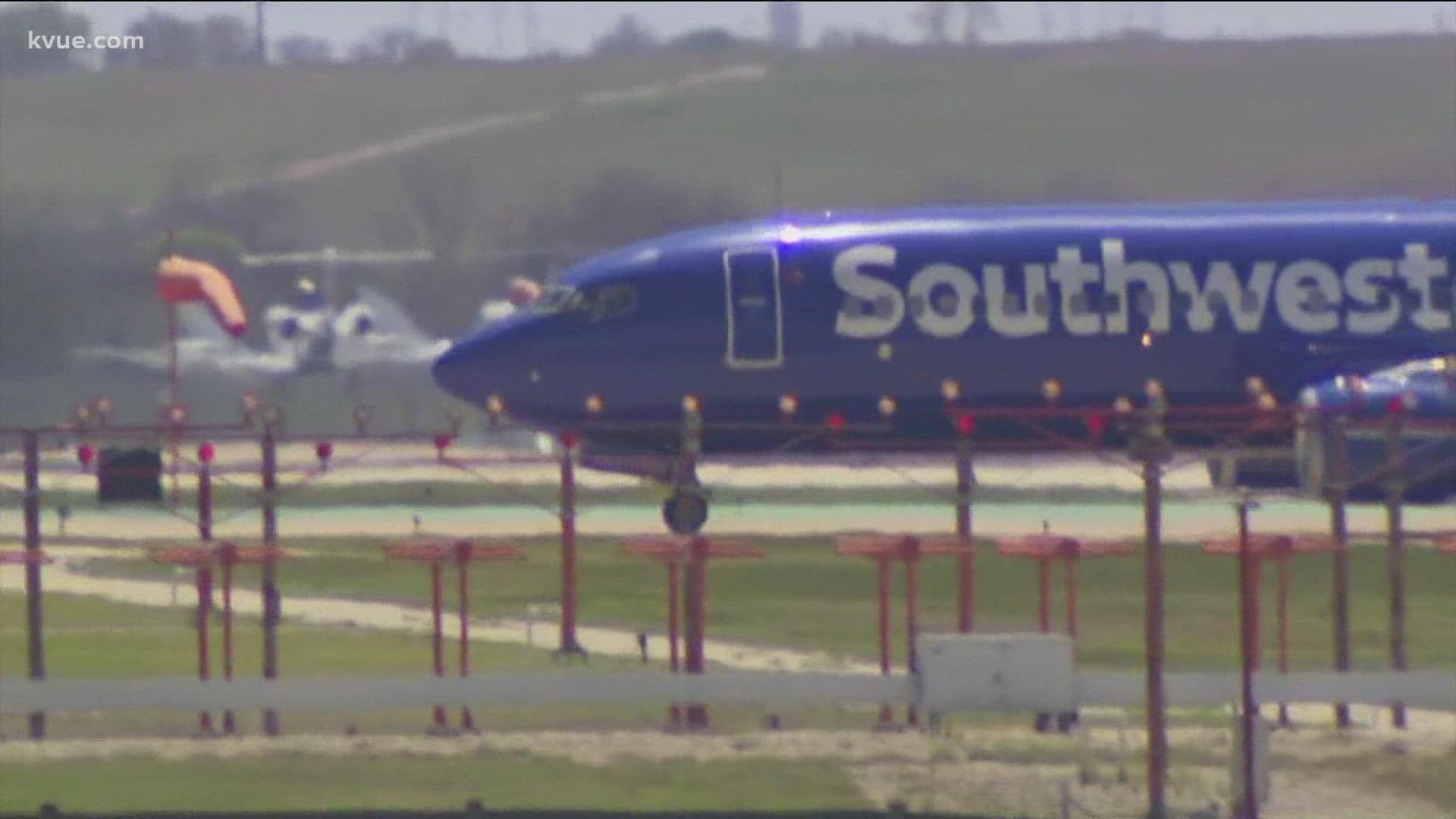AUSTIN, Texas — A fuel shortage alert at Austin-Bergstrom International Airport (AUS) that started on Monday afternoon officially ended on Wednesday afternoon.
Airport officials told KVUE's Bryce Newberry that normal operations have resumed.
In a statement Wednesday, airport officials said the fuel shortage did not cause any flight cancelations, delays or redirections. Airlines are no longer being requested to fly in with extra fuel.
It turns out, it's is not the first time this has happened.
Around 1 p.m. Monday, airport officials said the shortage alert was issued. All inbound flights were instructed to “tanker in” fuel, meaning they should arrive with more fuel than they may need in the event there wasn't enough fuel supply to fill up in Austin.
This is the second time an alert of this kind has been issued this year. The first was during the busy South by Southwest travel period at AUS, according to airport leaders. An alert was also issued during the F1 racing weekend in 2021.
A shortage alert is issued once the fuel tanks drop below a one-day supply, an airport spokesperson said. The shortage alert isn’t lifted until the tanks get back to two days’ supply of fuel.
AUS operates with a two- to three-day supply of fuel because of current capacity restrictions. Other airports of similar size operate with five- to seven- days’ worth of fuel, airport leaders have said.
As the Austin airport gets busier, it’s becoming more common for the fuel farm to operate with only a 1.5-day supply.
The airport is growing and rebounding from the pandemic faster than leaders expected. It’s preparing to serve a record-breaking 20 million passengers in 2022. When the airport opened in 1999, infrastructure was built for approximately 11 million passengers.
Menzies, the airport fuel facility operator, orders the fuel, and "they really never know how long it lasts” because it depends on getting fuel delivered in trucks and daily flight activity, which fluctuates with cancelations, according to an AUS spokesperson. Menzies orders fuel daily, and multiple deliveries arrive each day.
“It’s less of a case about not knowing how much we need and more of an inability to build up a reserve for busy days,” AUS spokesperson Sam Haynes said.
Occasional issues have come up in the past when the requested amount of fuel doesn’t arrive on time, Haynes said. But that isn't the issue this week.
Monday was the first time airport officials have made a shortage alert public, and it comes amid an ongoing battle over the location of a new jet fuel facility that will be fully paid for using money from the airlines.
As part of the airport’s expansion plan, two new 150 million-gallon tanks are planned on the western edge of the airport. But neighbors are concerned about their health and how the new tanks could affect the environment.
The planned facility received federal environmental approval in 2020, but late last year, Councilmember Vanessa Fuentes called for an independent City environmental review and asked airport leaders to hold community meetings to address neighbor concerns.
Both requests were fulfilled by the airport, but now Fuentes is calling on airport leaders to find three new potential locations for the facility, which would delay construction as the airport continues to add new carriers and routes. Construction is ready to start this spring, Haynes said.
The Austin City Council is expected to vote on Fuentes' proposed measure on April 7.
Fuentes didn’t respond to a request for comment about the fuel shortage alert. Her office told KVUE she met with airport officials to learn more about what happened.
In selecting the proposed site, AUS CEO Jacqueline Yaft wrote to Mayor Steve Adler and city councilmembers earlier this month: “The location was carefully considered using a site selection matrix that evaluated:
- Land Development Code compatibility
- Operational requirements and transfer line feasibility
- Future airport development compatibility
- Existing airport development and operations
- Environmental safety
- Airspace and Federal Aviation Administration facilities
The Department of Aviation acknowledges that any further analysis will lead to no alternative site meeting the screening criteria.”
A spokesperson for Houston's George Bush Intercontinental Airport (IAH) and William P. Hobby Airport (HOU) said neither has had fuel shortage alerts in the recent past. A spokesperson for Dallas Love Field Airport (DAL) said no fuel shortage alerts have been issued at that airport in recent years either.
PEOPLE ARE ALSO READING:

